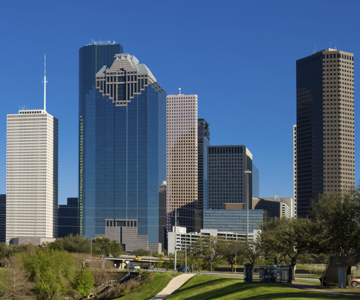The idea that hard work leads to prosperity is increasingly becoming an American pipe dream, in some places more than others.
Bloomberg ranked big cities — those with populations of at least 250,000 — based on their inequality as measured by the Gini coefficients calculated by the U.S. Census Bureau. Developed by Italian statistician and demographer Corrado Gini, the ratio helps measure how equal (or unequal) the distribution of income is among individuals in an economy. A Gini index of zero reflects absolute equality, while an index of one represents complete inequality.
Areas with high levels of income inequality also often have diverse populations and high levels of residential segregation, according to a report last year from Mark Mather and Beth Jarosz at the Population Reference Bureau, a Washington-based non-profit group.
Inequality happens when there's a concentration of people at the highest and lowest ends of the income spectrum without much middle-ground in between. Big cities are often hotbeds for such conditions because they attract rich individuals who can afford the cost of living — think rents in New York City or Los Angeles — as well as lower-income households who need access to services that large municipalities can often provide.
"You get this concentration both of poverty and of wealth in the same space," Jarosz said.
Places with wide ranges of educational attainment also run into inequality issues, with higher levels of schooling linked not only to a person's ability to get a job, but what type of job and what they'll be paid.
Atlanta in particular is interesting because "they don't have a really high proportion of the lower levels of education, but they have a really high proportion of people with a graduate degree or higher, so there's this huge spread," Jarosz said. About 21.5 percent of the Atlanta population that's 25 years or older has a graduate or professional degree, while almost 29 percent have only a high school degree (or equivalent) or less, Census data show. That compares with the overall U.S. figures of 11 percent and 41 percent, respectively.
Racially diverse cities also often exhibit higher levels of inequality, as minorities have lower incomes and higher poverty rates, Jarosz said. The median income for non-Hispanic white households was $59,622 in 2014, compared to $42,748 for Hispanic families and $35,481 for blacks, according to data from the Census bureau's American Community Survey.
The U.S. as a whole has become a more unequal country in the last five years, with its Gini index climbing to 0.48 last year from 0.469 in 2009.
"The overall story is that inequality has been rising steadily for about the past three decades," Jarosz said. While changes from year to year are often small or nonexistent, "if you look at the long-term trend, there's a really steady increase in inequality."
Bloomberg ranked the following places as The 10 Most Unequal Big Cities in America. All of their Gini coefficients exceed the national average and are between 0.50 and .060. No. 1 is the city with the most inequality.
10. Houston









